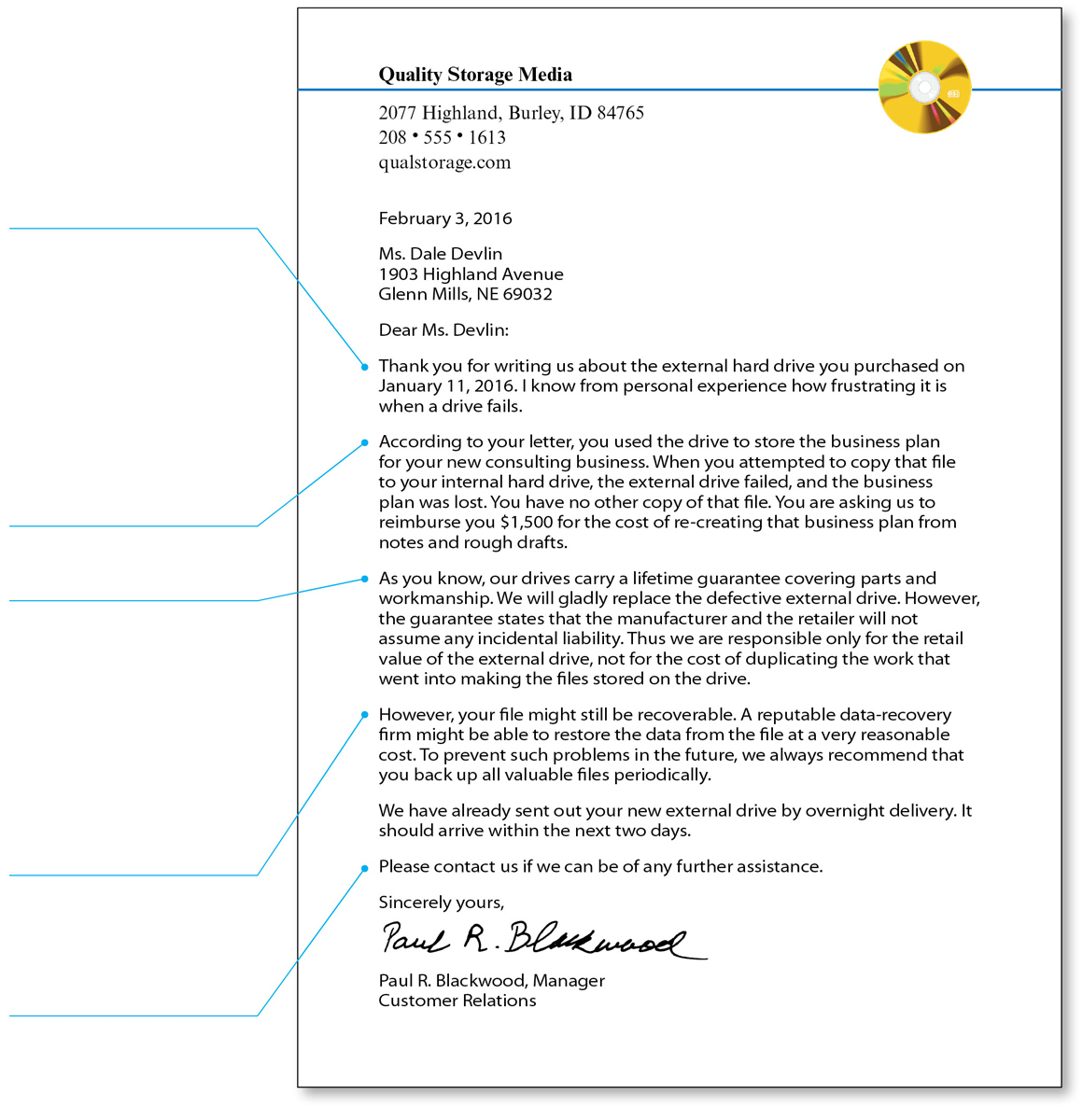
FIGURE 9.8 “Bad News” Adjustment Letter
If you are writing a “bad news” adjustment letter, salvage as much goodwill as you can by showing that you have acted reasonably. In denying a request, explain your side of the matter, thus educating the customer about how the problem occurred and how to prevent it in the future.
The writer does not begin by stating that he is denying the reader's request. Instead, he begins politely by trying to form a bond with the reader. In trying to meet the customer on neutral ground, be careful about admitting that the customer is right. If you say “We are sorry that the engine you purchased from us is defective,” it will bolster the customer's claim if the dispute ends up in court.
The writer summarizes the facts of the incident, as he sees them.
The writer explains that he is unable to fulfill the reader's request. Notice that the writer never explicitly denies the request. It is more effective to explain why granting the request is not appropriate. Also notice that the writer does not explicitly say that the reader failed to make a backup copy of the plan and therefore the problem is her fault.
The writer shifts from the bad news to the good news. The writer explains that he has already responded appropriately to the reader's request.
The writer ends with a polite conclusion. A common technique is to offer the reader a special discount on another, similar product.